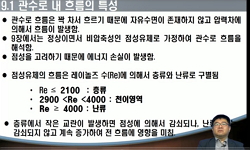<P>The steady-state simulation revealed that groundwater head in general was decreased toward the Lake Michigan with local variation caused by stream networks. In response to 2012 drought event, groundwater drawdown was not rehabilitated until s...
http://chineseinput.net/에서 pinyin(병음)방식으로 중국어를 변환할 수 있습니다.
변환된 중국어를 복사하여 사용하시면 됩니다.
- 中文 을 입력하시려면 zhongwen을 입력하시고 space를누르시면됩니다.
- 北京 을 입력하시려면 beijing을 입력하시고 space를 누르시면 됩니다.
https://www.riss.kr/link?id=A107450408
- 저자
- 발행기관
- 학술지명
- 권호사항
-
발행연도
2018
-
작성언어
-
- 주제어
-
등재정보
SCOPUS,SCIE
-
자료형태
학술저널
-
수록면
38-51(14쪽)
- 제공처
-
0
상세조회 -
0
다운로드
부가정보
다국어 초록 (Multilingual Abstract)
<P>The steady-state simulation revealed that groundwater head in general was decreased toward the Lake Michigan with local variation caused by stream networks. In response to 2012 drought event, groundwater drawdown was not rehabilitated until spring 2013, implying that the aquifer required approximately 3-4 months until responding to meteorological drought. Additionally, variation in recharge caused to change in groundwater table throughout the entire aquifer simultaneously, but the effect of Lake Michigan stage on groundwater table was relatively minimal. Finally, a certain portion of streams in the Cedar Creek Watershed could be ephemeral. Switching from the RIVER to the DRAIN package for the implementation of ephemeral river and stream cells resulted in significant reduction of both groundwater head and flux, implying that realistic distribution of present groundwater head would resemble one simulated between RIVER and DRAIN packages.</P>
동일학술지(권/호) 다른 논문
-
- Elsevier
- Bae, Deg-Hyo
- 2018
- SCOPUS,SCIE
-
- Elsevier
- Kim, Jun Song
- 2018
- SCOPUS,SCIE
-
- Elsevier
- Kim, Changhwan
- 2018
- SCOPUS,SCIE






 ScienceON
ScienceON


